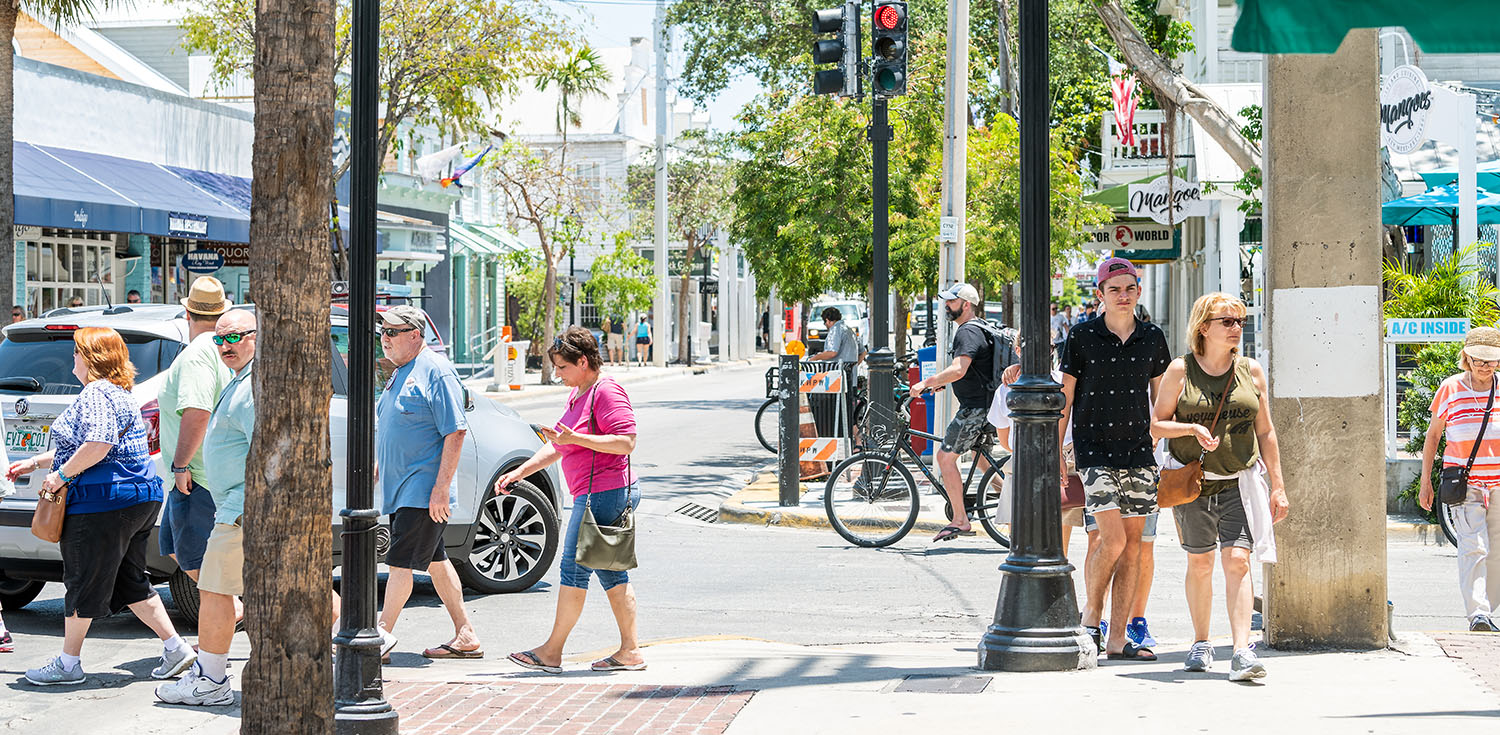
According to Florida Statute 316.130, pedestrians and bicyclists must obey any and all traffic control devices in accordance with Florida law. Pedestrians have an obligation to act in accordance with the law and to use common sense. Sidewalks are maintained for pedestrians so they don’t have to walk in the roadway. Cities have also implemented bike lanes along most roadways so that bicyclists do not have to travel on the sidewalks where they are more likely to collide with a pedestrian. If you are a bicyclist traveling in the bike lane in the roadway, you most definitely are required by law to abide by all traffic control devices just the same as motor vehicles.
At an intersection, pedestrians have the right of way in a crosswalk and most large intersections have crosswalks and pedestrian traffic signals. When the traffic signal indicates the pedestrian may cross, the pedestrian has the right of way and all traffic must yield until the pedestrian has reached the other side of the road. Pedestrians must cross in the crosswalk and are prohibited from crossing from corner to corner. Pedestrians are only permitted to cross at a crosswalk when they have the appropriate traffic signal to cross with either a walk signal or a green flashing light. If a pedestrian crosses in a crosswalk when they have a steady red hand signal indicating they are not allowed to cross at that time, the pedestrian can be given a ticket for jaywalking. This applies to bicyclists also. Any driver of a motor vehicle who fails to yield for a pedestrian in a crosswalk with the appropriate traffic signal can be issued a citation for failure to yield the right of way, a fine, and possibly points on their license.
Jaywalking is a traffic offense in the United States. Not many other county issues fines to pedestrians for not crossing in marked crosswalks as most other countries are more pedestrian friendly. In the 1920s, in the dawn of the motor vehicle era, there were astonishing amounts of pedestrian vs. motor vehicle accidents. Obviously, people began blaming the number of accidents on the increased amount of motor vehicles on the road. Car manufacturers were worried people would start a petition to ban motor vehicles so they started a propaganda campaign to blame the accidents on pedestrians. This caught on and people started to ridicule pedestrians who failed to cross the road in the marked crosswalk. Car manufacturers would also hire people to stand on the sidewalk and yell obscenities at pedestrians if they were on the road. These pedestrians were referred to as Jays, which was another word to describe someone of less intelligence at that time. The word jaywalker stuck and is still used to this day. By 1930, most cities had adopted anti-jaywalking laws that still stand to this day.
Not only is it a traffic offense to jaywalk, it’s also a traffic offense to walk or bike on the wrong side of the road. In cases where there is no sidewalk, it is illegal to walk or bike in the direction of oncoming traffic. All pedestrians and bikers have an obligation to abide by the same laws as motor vehicles and are subject to the same fines and citations. Just like a driver of a motor vehicle, if you receive too many citations as a pedestrian, you run the risk of having your driver’s license suspended or revoked due to carelessness. If you are a pedestrian under the influence, you can be arrested for public intoxication and can be fined, jailed or have your license suspended or revoked. A large percentage of pedestrian vs. motor vehicle accidents happen at night with pedestrians under the influence.
Jaywalking is extremely dangerous as any impact with a vehicle can result in major bodily injury or possibly death. A pedestrian absolutely has the responsibility of walking or biking with due care. If you are struck by a motor vehicle as a pedestrian and you were found to be at fault for the accident, you are responsible for paying your medical bills, and any out-of-pocket expenses and could also be subject to a lawsuit from the other party, just the same as you would be if you were operating a motor vehicle. If you are involved in a motor vehicle vs. pedestrian accident, a lot of the time it is more difficult to determine who is actually at fault for the accident. If there are no eye witness accounts, a large amount of all pedestrian vs. motor vehicle accidents result in comparative negligence. If the case ends up in a lawsuit, it is a jury’s job to listen to the facts and determine who was at fault or if both parties were at fault, which percentage of each party was at fault.
Florida’s pedestrian statute 316.130(11) states that if you “fail to cross a street in a crosswalk where required, you are liable for a traffic ticket”. It also states that pedestrians must cross “between adjacent intersections at which traffic control signals are in operation, pedestrians shall not cross at any place except in a marked crosswalk”. Until recently, a large number of pedestrian traffic citations were issued incorrectly as police officers were not correctly citing the statute and issuing tickets to pedestrians for crossing in places that are not between intersections with traffic signals. Not all intersections have marked crosswalks or traffic signals but still pedestrians were being issued citations. With new city planning and placement of more pedestrian safety crossings, these citations are being reduced. Until about the early 2000s, cities and streets were designed for motor vehicles. There were not many options for pedestrians to cross the road so they had no choice but to jaywalk. Many city planners today have begun designing cities around pedestrians in order to limit the number of motor vehicles on the street and encourage people to walk, bike, or ride public transportation more often. With the new amount of people on the street, many cities have taken into consideration the importance of pedestrian bridges, increased sidewalks, foot and bicycle paths and more crosswalks, and longer crosswalk signals. Pedestrians still have to abide by the traffic laws but these new advances are making it much easier for people to walk safely around their cities and neighborhoods and fewer pedestrians are being issued citations or fines.











